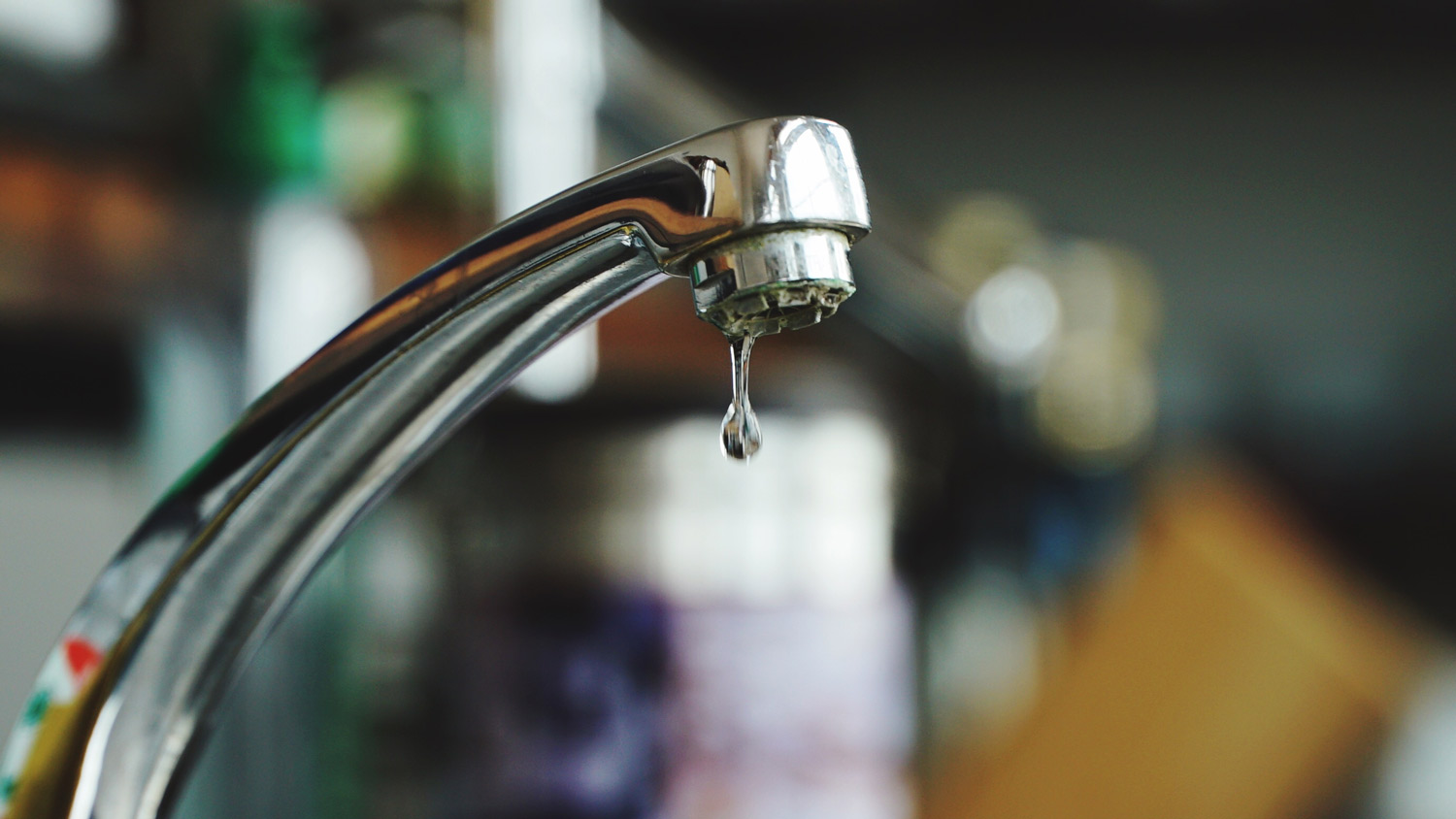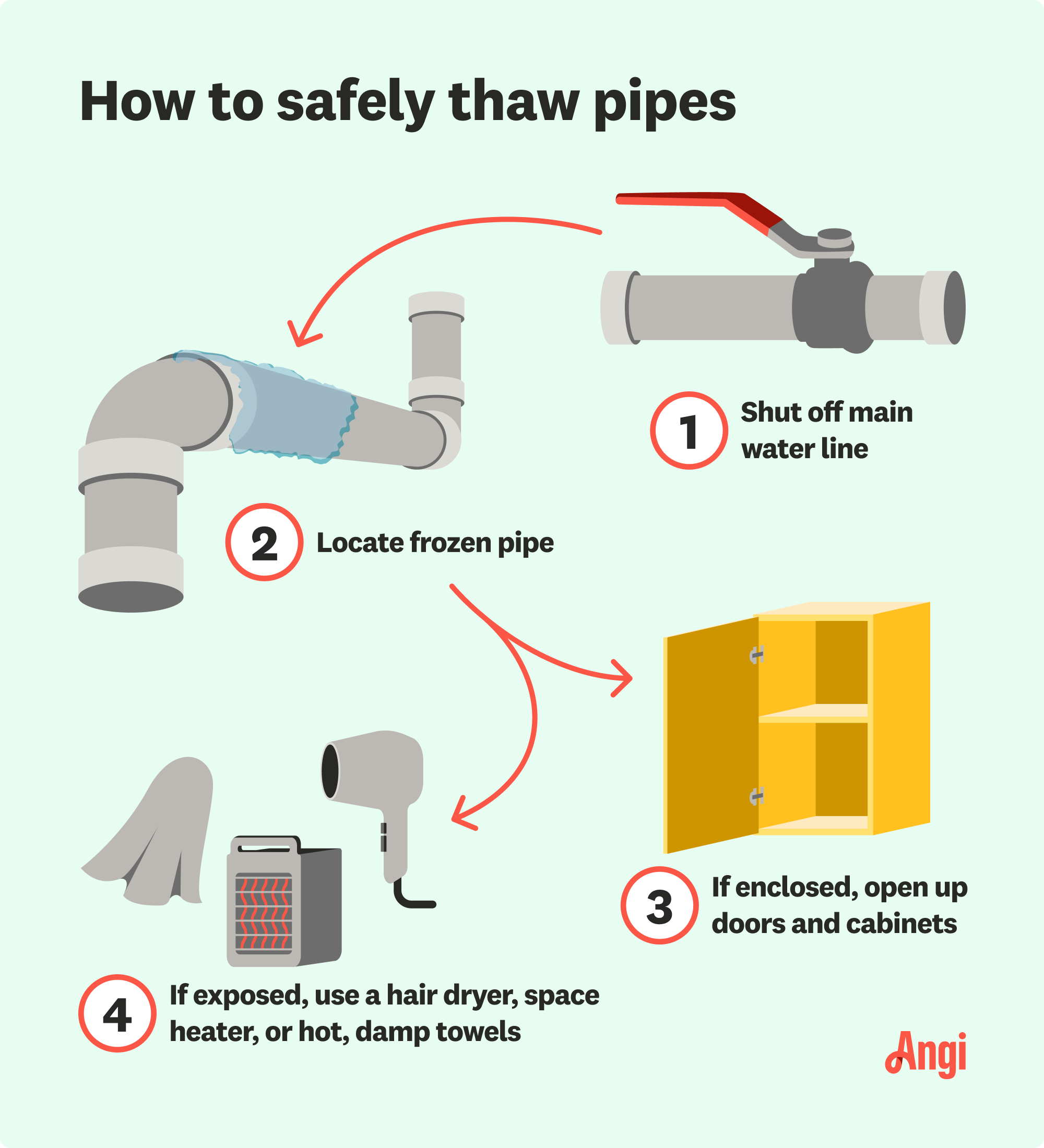
Worried about water leaking around your toilet? You may have a faulty toilet flange. Learn more about the cost to replace a toilet flange in our guide.
Keep your pipes in tip-top shape all winter long


You can take DIY measures like opening cabinets to increase airflow, but a licensed plumber can identify at-risk pipes and install a permanent mitigation method.
A plumber can winterize your pipes to prevent them from freezing, charging around $1.10 to $11 per linear foot for insulation.
Thawing frozen pipes on your own can be dangerous, but a pro can do it safely, with the cost of hiring a plumber around $45 to $200 per hour.
As temperatures start to drop in the late fall, there’s an increased risk of significant home damage: frozen pipes. If the water in your pipes freezes, it can cause pipes to burst, leading to potentially massive and costly damage. That’s why it’s crucial to know how to keep pipes from freezing in the first place—and what to do if they do freeze (or even burst).

Winterizing your pipes: Insulate your pipes in unheated locations before the temperature drops to prevent frozen pipes in the coldest months of the year. Pipes in attics, crawlspaces, basements, and outdoors should all be insulated. Pipe insulation can be done by yourself and the material costs $0.20 to $3 per linear foot. A pro will charge $1.10 to $11 per linear foot for insulation.
Open cabinet doors: Opening cabinet doors during colder days helps warm air circulate throughout your home so it reaches pipes in the walls behind bathroom and kitchen cabinets.
Close and insulate your garage: Keep your garage doors shut as much as possible if water supply lines run through the garage. You can also apply weather strips around the garage door frame to prevent cold air from seeping in.
Leave the heat running: Set the indoor temperature to at least 55 degrees Fahrenheit to prevent pipes from freezing while you are gone. While it might be tempting to lower the thermostat to lower utility bills while you are out of town, a busted pipe will cost far more to handle.
Open interior doors: Keep your bedroom and bathroom doors open during the winter. This helps create a whole-house air flow that carries warm air around so walls and floors are evenly heated. It also helps prevent concealed pipes from freezing.
Let the faucet drip: Moving water is harder to freeze due to the energy and friction created as it flows through the faucet. When the temperature is lower than 20 degrees outside, it’s best to leave the faucets dripping to prevent your pipes from freezing when you’re out of town.
Electrical heating tape: Heating tapes cost about $1 to $3 per linear foot and can be found at most hardware stores. You can wrap manual heating tapes around pipes that hare prone to freeze and plug them in when the temperature drops below freezing. You can also use self-monitoring heating tape that automatically turns on once its sensor detects the pipes are too cold.
Seal cracks and openings: Use caulking or weather strips to seal any cracks and openings around your windows, doors, walls, and foundations, especially in areas where water pipes are located.
Insulate crawl space and attic: Insulating your crawl space and attic provides additional protection for your pipes. This is especially important if you live in an older home.
Drain outdoor pools and hoses: Before winter arrives, make sure your outdoor pools and hoses are completely drained. Start by turning off your water supply valve. Remove the hoses, shake out excess water, and store them. Also, winterize your outdoor faucets.
You’ll probably figure out one or more pipes are frozen in your home after you try to brush your teeth or take a shower on a cold morning—but no water comes from the faucet. To find the specific pipes that are frozen, look for these signs:
No or low water flow coming from the fixture attached to the pipe
Condensation (frozen or liquid) on the outside of your pipes
Gurgling or banging from your pipes
Small surface cracks
Swollen pipes
Odors coming from pipes or water
You might be too late to stop the pipes from freezing, but you may be able to thaw them before the problem worsens. First and foremost, shut off the main water line to prevent serious damage in case a pipe bursts. Then, determine how to unfreeze your pipes based on whether they’re enclosed or exposed:
Thaw pipes inside your home by turning up the thermostat. Open up doors and cabinets to help warm air circulate.
Use a hairdryer to heat 12-inch sections of the pipe until it is no longer frozen.
Aim a space heater toward the pipes.
Wrap exposed pipes in hot, damp towels. Replace the towel frequently as it cools.

Never use open flames to thaw frozen pipes, as this can be extremely dangerous. This includes blowtorches, propane heaters, and charcoal stoves.
You should also avoid pouring boiling water down your drain pipes or on top of frozen pipes. Not only does this carry the risk of scalding you, but the drastic heat can damage the pipes, and the water you pour on the pipes may freeze, worsening the issue.
Also, if there’s standing water from a burst pipe, don’t turn on or use any appliances near or around the standing water. Doing so puts you in danger of electrocution, which can lead to serious injury.
If your frozen pipe bursts, you need to act fast:
Locate the water shut off valve: Most main water shut off valves can be found indoors, usually in the basement. It’s located a few feet from the main water line. If you don’t have a basement, check utility areas such as your laundry room or around the water heater. If your house has a crawlspace, your might find the water shut off valve there.
Turn off the main water supply: This prevents water from continuing to pour into your home.
Call a plumber: Just be prepared to pay steep costs for immediate help from your local emergency plumber, especially at night, on weekends, during the holidays, and when several people in your location are dealing with frozen pipes.
Drain your pipes: While you’re waiting for the plumber, drain what you can out of the pipes by turning on faucets and flushing toilets.
Assess the damage and clean up: You’ll want to assess any water damage that needs to be fixed. On average, water damage restoration costs nearly $3,500. Clean up and dry the area thoroughly with towels and fans to prevent mold damage. If you have homeowners insurance, you’ll want to file a claim as soon as possible.
You may be able to thaw your pipes on your own, but if you’re not able to do so or if you’ve found a leak, it’s time to hire a plumber near you. Thawing pipes can be dangerous if you don’t do it correctly, so unless you have experience, it’s better to leave the job to the pros.
Note that fixing frozen pipes is something you shouldn’t put off until later. Call a plumber and schedule a visit as soon as possible to prevent the pipe problem from getting worse. If your frozen pipes are left unfixed, they can burst, which can lead to a plumbing emergency with costly repairs.
In general, plumbers cost $45 to $200 per hour. Costs are on the higher end in emergencies, like when your pipes are frozen and you need help fast.
From average costs to expert advice, get all the answers you need to get your job done.

Worried about water leaking around your toilet? You may have a faulty toilet flange. Learn more about the cost to replace a toilet flange in our guide.

A main water shut-off valve controls water flow for your entire home. Here we break down the cost to replace a main water shut-off valve.

A burst pipe is a homeowner’s worst nightmare—but you can get ahead of the potential expense. This guide will help you budget for burst pipe repair costs.

Fixing a leaky faucet starts with knowing which type of faucet you have. Follow these steps to learn how to fix a leaky faucet in no time.

Dealing with slow-draining sinks or a full toilet clog? Use this DIY guide on how to clear clogged drains to get your drain working again in no time at all.

Most homeowners will eventually need to replace bathroom hardware. This guide breaks down bathtub faucet installation costs, so you can upgrade your bathroom.